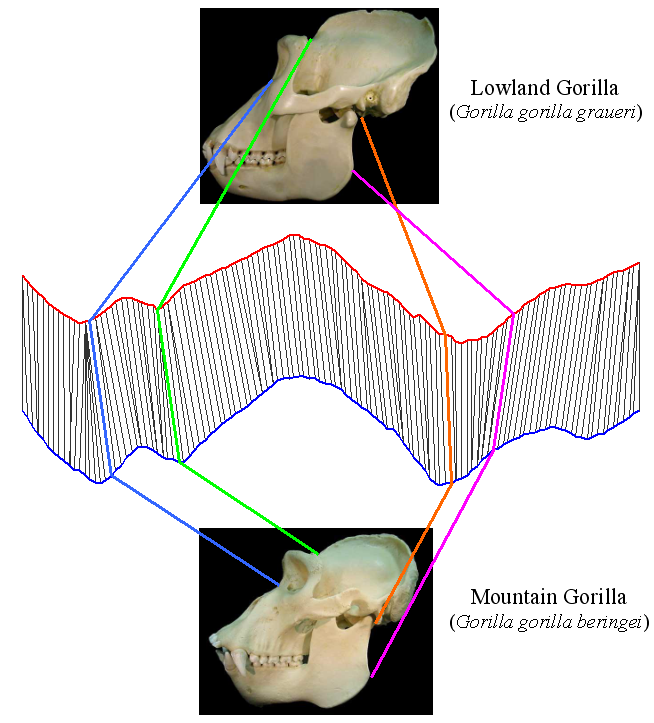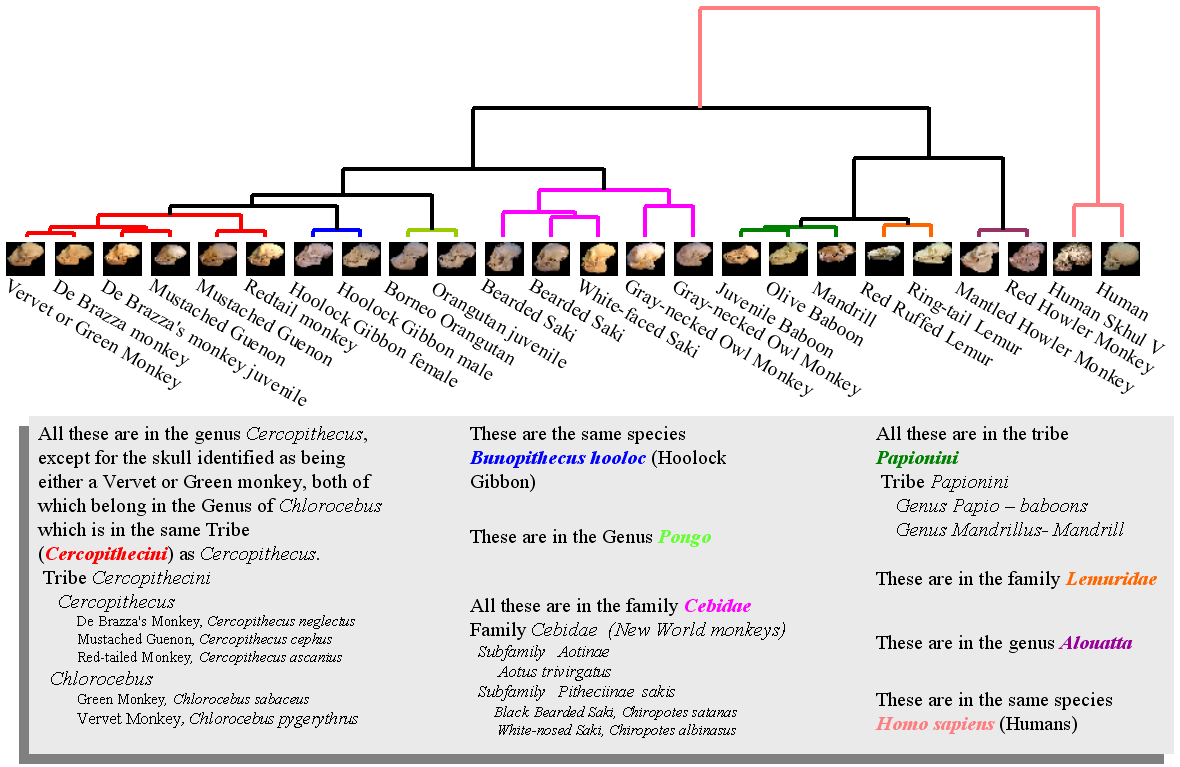- An expanded version of the paper is here.
- Here are the slides, warning the are large files. 1 slide per page PDF (14 meg), or 6 slides per page PDF (10 Meg), or MS powerpoint (26 Meg).
- The paper makes extensive use of envelope based lower bounding with the LB_Keogh, here is a page which lists some other uses of LB_Keogh.
2) Li Wei, Eamonn Keogh and Xiaopeng Xi (2006) SAXually Explicit Images: Finding Unusual Shapes. ICDM 2006. [pdf][Powerpoint][ expanded journal version].
3) Dragomir Yankov and Eamonn Keogh. (2006). Manifold Clustering of Shapes ICDM 2006. [pdf]
4) Ken Ueno, Xiaopeng Xi, Eamonn Keogh, Dah-Jye Lee (2006). Anytime Classification Using the Nearest Neighbor Algorithm with Applications to Stream Mining. ICDM 2006. [pdf] (Note: This paper is not exclusively about shape, but does show how to classify shapes with any anytime algorithm).
5) Xiaopeng Xi, Eamonn Keogh, Li Wei, Agenor Mafra-Neto (2007). (tentative title) Finding Motifs in Database of Shapes. SIAM International Conference on Data Mining (SDM2007).
6) Xiaoyue Wang, Lexiang Ye, Eamonn Keogh and Christian Shelton. (2008). Annotating Historical Archives of Images. JCDL 2008 [pdf]
7) Lexiang Ye, Xiaoyue Wang, Dragomir Yankov and Eamonn Keogh (2008). The Asymmetric Approximate Anytime Join: A New Primitive with Applications to Data Mining. SDM 2008. [pdf] Datasets are here. (Note: This paper is not exclusively about shape, but one experiment does deal with shapes).
- Here are some video clips that show one possible method to convert shapes to time series. Our examples include a Face, an Oak leaf and a Maple leaf. Thanks to Chotirat (Ann) Ratanamahatana for her help in preparing these examples.
- Here are some high quality PowerPoint slides that give the visual intuition behind converting shapes to time series.
- We have done some work of shape matching of petroglyphs
Datasets
- Here is all the data needed to replicate the experiments in our VLDB 2006 paper. Warning 120 meg file. The password is paper109, if you are looking for data for classification experiments, then see also this webpage.
- Here is the Mixed-Bag shape dataset. This dataset was also used in Dr. Vlachos paper.
- Here is a collection of 74 primate skull images. They are cached here for your convenience, but remain copyright of Glendale College Anthropology Department.
- Here is a collection of 781 Diatom contours, from 37 different classes. Thanks to A.C. Jalba for sharing these. Everything you need to know about Diatoms is probably here.
Acknowledgements
- Thanks to all the donors of data.
- Thanks to Jason Dorff and Dr. Eric Johnston of for help with primate skull images.
- Thanks to Dr. Longin Jan Latecki for useful suggestions and pointers.


This is a phenogram, not a phylogenetic tree. For the current best phylogenetic tree, see the Tree of Life project, starting at their primate page.